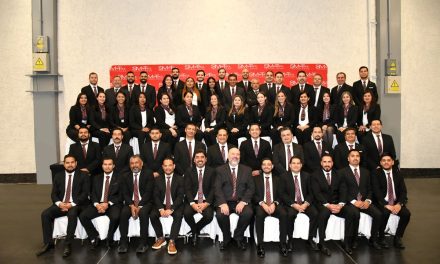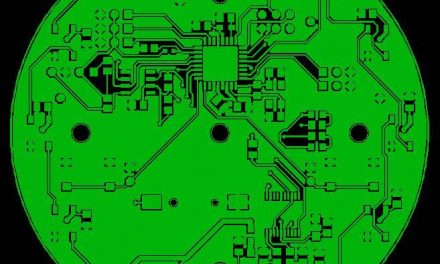May We Live in Interesting Times: Regional Outlook in Mexico
By Aldo Medina, Director of Custom Engineered Components, Plexus

Why has the landscape changed and what opportunities exist for the EMS industry and their sourcing teams? For the three major geographical areas (Americas, Asia, and EMEA), the nature of the EMS business has simply changed. There are two main factors at play: the regionalization of the supply base and rationalization of a total landed competitive cost model. Continuity of supply no longer requires huge manufacturing lines, a supply chain for large quantities of material flow, supplier owned inventories to provide greater levels of flexibility and armies of people lined up for the next shifts. There are variables that are disrupting this volume-based equation, concepts like: customization, real time ordering, build/configure to order, machine to machine communications, and even IoT enabled, what is called industry 4.0. These factors require a strategy to increase market share, and be end-consumer driven, from the time the product is conceptualized. The EMS must be able to provide multi-dimensional flexibility for their customers and their customers’ customers.
In addition, the EMS is expected to play a bigger role in the region itself at the factory level. They are often called upon in the footprint to support the distribution equation for our customer end markets; in other words they must provide what the customer wants, wherever they want it, and at a competitive landed price. These two factors are constantly requiring our local organizations to develop a new generation of suppliers for our industry.
Markets like industrial, medical, automotive and other high reliability sectors, are more and more looking to outsource their manufacturing operations and concentrate on their core business differentiators. For this type of business most of what we have been seeing lately is complex assemblies with more block or modular electronics (SOIC’s) and greater mechanical content. Some of these applications are for the first time looking for external sourcing solutions that can drive their competitive landscape both at a price and with all possible flexibility to tailor solutions to their customers in a timely manner. Along with the imminent change from fossil fuels to EV and autonomous driving, these variables brings new challenges for sourcing specialists to cope with the new required supply chain, and in some cases how to re-invent their verticals.
Trends and Threats
A positive trend in 2019 and growing stronger for 2020 in the Americas, and especially for Mexico, is the growth of medical applications. OEM customers are looking to the region to manufacture their next generation of products, and not only for the proximity to the USA but also due to the human factor: the region offers highly skilled engineering talent to design, manufacture and sustain any product for this market. The local suppliers are conscious of higher industry standards and certifications, ramping up their production capabilities for additional value add rather than low margin volume driven projects. In addition, raw materials for custom components, (heavy on mechanical content: Plastics, metals, alloys, etc.) have stabilized and pricing is now trending downwards after the initial impact of the tariffs on the China market.
Government initiatives, however, have been unenthusiastic when it comes to foreign investment in the region. Considering the potential impacts of tariffs, current business migration has been overall reactive, slow and conservative on both sides of the border, unfortunately. For Mexico the absence of private sector /government business certainty, a clear path on politics, reliable investment guidelines and a dependable plan to promote foreign investments, has softened the enthusiasm of industrial groups and owners’ willingness to invest in new technologies despite Mexico being the logical geographical option for the USA market. Mexico clearly is the logical lower cost manufacturing solution for this region and there is an inherent business advantage, an opportunity to increase revenues from business migration to Mexico in response of the tariffs. The opportunity for us, supply chain professionals, is to encourage innovation as a key differentiator and continue to invest in relationships. Perhaps the best strategy for any supplier is not to wait on the government, but to support the new requirements of the EMS industry and to rely on potential business growth to increase the level of investments in the region.
The United States is facing different challenges; business is coming back to the Americas, again slowly but steadily. We must keep in mind that some of the manufacturing processes have transitioned to other regions for more than two decades; plenty of suppliers are already reporting capacity constraints. The tight labor market is pushing cost and lead times. Adding resources will be essential: trained and experienced machine operators, specialized welders to mention a few.
Opportunities
In the short term I absolutely see a growth trend in the medical, automotive and aerospace industries. Many companies in the regional supply base are getting ready by investing in engineering support and certifications and also increasing value add operations to capture more of this business. Supplier development for the coming years will focus on innovation and flexibility, driving growth in the region. The use of technology to improve time and reduce cost, (reduce set up times, substitute materials, invest in faster and newer machinery, etc.) will be fundamental to capture higher profit business in low volume/ high mix/ high complexity models; more and more of which have a sophisticated mechanical content. If you are thinking about it, this is the right time to invest in the region – collaboration between the OEM and EMS is becoming more seamless and synchronized, and the local supply base is willing to work with the industry to capture the new business flooding from China. If you are a sourcing specialist, you are in the right place!
Aldo Medina is Director of CEC (Custom Engineered Components) commodities for Plexus, Global leaders in complex product design, manufacturing, supply chain and aftermarket services. Strategically located globally, Plexus supports diverse market Sectors: Medical, Industrial, Commercial and Aerospace. With more than 20 years of experience in sourcing and commodity management roles, Aldo leads and inspires multinational teams in the Americas, Asia and Europe to effectively develop supply chains for various types of materials, including electronic components, electromechanical assemblies and customized mechanical components.












